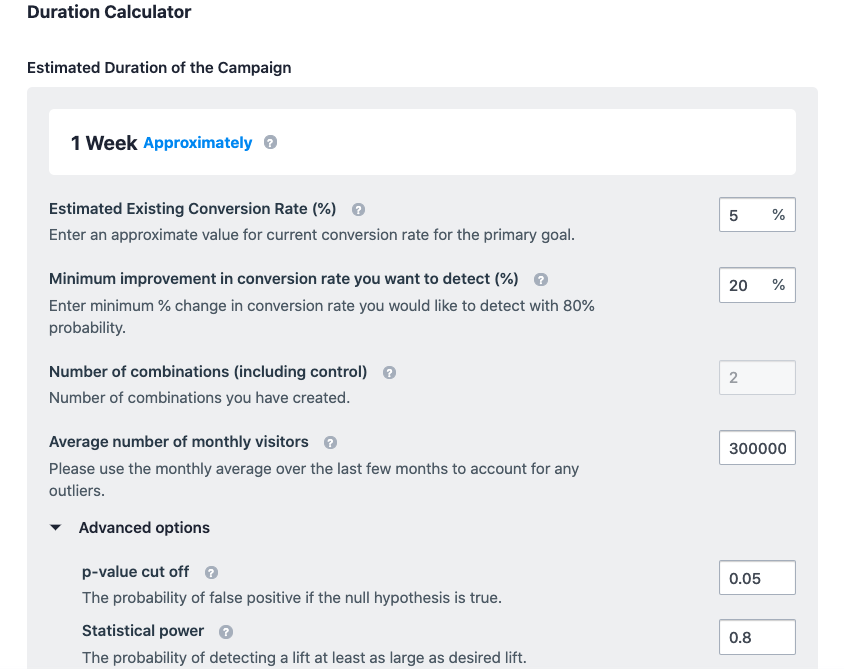The Estimated Duration Calculator calculates the estimated duration of your Multivariate test after a week and displays it automatically based on the stats seen in your test. After the last step of the creation process and when you start the campaign, you can see this option, but it has run for less than a week.

The duration calculator in the Multivariate test provides you with an estimated time to run your test to get meaningful results. The VWO SmartStats engine calculates this estimate based on the values you provided in the duration calculator.
Using the current data and the expected conversion lift you want from the Multivariate test, VWO SmartStats will give you an estimate of how long you’ll need to run the test.
To know the details and obtain data regarding your control page, you can refer to any existing analytics tool you are using (Google Analytics, Mixpanel, Kissmetrics, and so on) or run a Conversion Tracking test in VWO. To learn more about VWO SmartStats, SmartStats in VWO.
The Duration Calculator screen calculates the estimated duration through the following:
- Estimated Existing Conversion Rate: This is the conversion rate of the control version of your website. A tool like Google Analytics or a VWO Conversion Tracking test can help you measure this rate.
- Minimum improvement in conversion rate you want to detect: This is the percentage of improvement in conversion you want to achieve against the existing conversion rate. If the variation actually achieves this level of lift over control, then the test has a 90% chance of correctly reporting variation as a winner.
- Number of combinations (including control): This includes all the different variations you are running the test on, plus the Control.
- Average number of monthly visitors: Check your analytics tool or run a VWO conversion test to find out the number of monthly visitors.
ADVANCED OPTIONS
These advanced options are only available in Multivariate tests.
- p-value cut-off: This is the probability of falsely reporting a winner even when all variations have identical conversion rates.
- Statistical power: This is the probability of detecting a change at least as large as the desired lift. For example, if the desired lift is 10% and statistical power is 80%, then if a variation with a 10% lift is present, your test has an 80% chance of detecting it.
The estimated duration may differ from the initial estimate in the duration calculator if the actual number of visitors differs significantly from what you entered.
